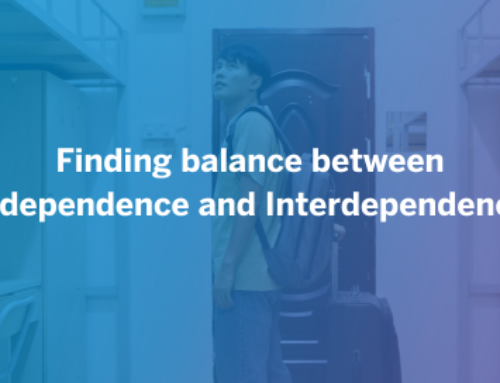
The Normalization of Weed: What We Don’t Want To See
In light of our present scientific knowledge, the notion of cigarettes being viewed as a benign cultural norm appears absurd. It is puzzling to consider that our parents’ generation had ashtrays in doctors’ offices and designated smoking sections on airplanes. We are appalled by the marketing industry’s deliberate efforts to conceal and suppress scientific research. Although it may appear crude by today’s standards, the notion of cigarettes being considered deadly and filled with carcinogens was unfathomable to the average person for most of the 20th century. How could they have been so misguided?
The true account of such broadly accepted misinformation informs our understanding of current drug trends. History is possibly repeating its course. A close study of the behaviors that allowed for the persistence of tobacco popularity despite severe consequences reveals a trend of medical endorsement, celebrity normalization, blindness to ongoing research, and advertisement of misinformation. The cultural acceptance of the drug leads the average person to remain unaware of the research, and blind to the harms they may be incurring. Societies’ blind spot of choice today is marijuana.
The potency of marijuana is rapidly increasing, there is an alarming rise in weed-induced psychosis, treatment admissions for marijuana addiction have increased by nearly 100% in less than a decade, and an array of alarming neurological effects are being published and replicated regularly in scientific journals[1]. Despite these developments, weed has become today’s benign cultural norm, with any hint of its toxicity and danger sounding very hard to believe. Just as with cigarettes, the current societal narrative leads most to struggle to fathom the danger that it may pose. By closely studying the trends that drove the acceptance of cigarette use, alongside a comprehensive review of current research and cannabis marketing, we can unveil the pathway leading us to disregard evidence until later generations look back, utterly bewildered.
Societies’ perception of cigarette use in the 20th century is observed through various surveys. Polling data from 1954 revealed that 59% percent of the U.S. public did not believe that cigarette use was linked to lung cancer [2]. A study in 1960 revealed that 66% of U.S. doctors didn’t think that cigarette smoking should be considered a major cause of lung cancer.[3] While this is a jarring statistic to the modern eye, this study was published as an example that doctors’ wariness of cigarette use was on the rise.
This miscalculation was not based on a lack of medical research into tobacco’s health risks. Much to the contrary, researchers began to propose a connection between terminal lung issues and tobacco smoking as far back as the late 19th century [4]. Converging evidence among surgeons encountering increasing degrees of lung cancer during the early 19th century led to a growing verdict that cigarettes were to blame. By 1950, there was a substantial international influx of population and epidemiological studies, controlled animal studies, and cellular research which revealed that smokers were much more likely to develop lung cancer, lung tumors, and cellular degeneration.[5]
For years, the overwhelming popularity and advertisement of cigarettes effectively silenced doubts and made skepticism appear absurd. Whenever worries about cigarettes rose and consumption dipped, it would rebound rapidly. Smoking was simply far too normal to be a problem. Fueled by substantial tobacco advertising revenues, media outlets had little incentive to highlight smoking’s negatives[6]. Despite growing medical awareness of health risks, the industry persisted in normalizing smoking for young audiences – campaigns fueled by blatant lies. It was only through government-mandated counter-advertising and content restrictions that we now look back in shock at their acceptance and promotion of something so dangerous.
We are no less prone to wholesale misjudgment regarding the safety of a drug than the population in the 1950s. Popular and profitable trends have a way of overshadowing scientific evidence.
Weed is America’s drug of choice. It has become extremely popular. The proportion of under-18 users had increased by 67% since the 1960s.[7] In 1990, 78% of high school seniors regarded regular marijuana use as a great risk. Today, the number is down to 27.6% [8]. The availability of delta-8 – a form of THC that was not mentioned in previous legislation – has made weed not only legal across the country but available in gas station vapes and candies. In cities such as New York, where weed has been legalized, it is not uncommon for people to smoke weed on the subway. This may sound familiar to airplane cigarette smokers. The U.S. cannabis market size is valued at USD 13.2 billion in 2022 and is expected to expand exponentially in the coming years.
While it is reasonable to celebrate the de-stigmatization of those who use drugs and the lifting of unreasonably punitive policies, the pendulum has swung so far as to completely ignore alarming ongoing medical research. Weed is advertised as entirely non-addictive. Research tracking depictions of recreational use in advertisements, TV shows, and social media reveal an exponential increase each of the past 10 years [23]. While it is indeed a component of genuine medications, the cultural conception of its medicinal value extends to all use of cannabis for virtually any reason. In nearly every facet it is looked at just as the cigarette was. For today’s average consumer, the scientific warning has to contend with the many weed-using influencers who glamorize smoking weed.
As with cigarettes, the substantive decrease in the perception of risk is not due to a lack of medical evidence demonstrating alarming health risks. Because the evidence has been so obscured, I will take time here to introduce the swath of health risks and scientific articles being published. Here is what we know so far.
Animal studies have demonstrated that chronic exposure to THC caused a level of nerve cell loss in the hippocampus (the brain structure responsible for memory formation and recall) at 11 to 12 months of age which equaled that of unexposed animals twice their age.[9] Studies have demonstrated that rats exposed to marijuana during adolescence show substantial problems with learning and memory tasks later in life. Furthermore, findings in animal studies suggest structural and functional changes to the hippocampus in adult mice.[10]
Research has replicated such findings to an even more pervasive degree in human subjects. Longitudinal studies have demonstrated that repeated exposure to marijuana, especially during adolescence, is linked to neurocognitive deficits in attention and memory that persist beyond abstinence, and suggest structural brain alterations, damage to white matter fibers, and abnormalities of neural functioning[11]. Multiple decades-long longitudinal studies have found cognitive deficits associated with routine cannabis use compared to non-users, including substantial declines in IQ, verbal memory scores, and possible risk factors for dementia. In these studies, the impact of cannabis on cognitive impairment was greater than that of alcohol or tobacco use.[12][13][14] Among the array of physiological deficits associated with cannabis is research suggesting an increased risk of cardiovascular issues, heightened immunosuppression, and an increased risk of testicular cancer in regular users.[15][16]
Furthermore, the non-addictive reputation of weed runs counter to a steady stream of ongoing research. Weed is one of the most commonly listed drugs of choice for admission into rehab.[17] Research has suggested that 30% of users meet the criteria for CUD (cannabis use disorder).[18] Most notably, cognitive research has demonstrated that cannabis use leads to neurological inflammation and changes in neuron morphology (changes in the shape of brain cells) associated with reward-seeking, affective dysregulation, and other mechanisms associated with a variety of addictive behaviors. [19] Beyond being independently addictive, weed may neurologically increase your likelihood of addictive behaviors and alter your relationship with reward and motivation.
Lastly, psychological studies have begun to demonstrate various mental health deficits associated with recreational cannabis use. Instances of weed-induced psychosis have risen exponentially[20] and weed has been linked to earlier onset and increased likelihood of schizophrenia in those with genetic risk factors [21]. Research done with participants in outpatient treatment facilities found that regular weed use had long-term exacerbating impacts on the course and development of anxiety by leading individuals to adopt false safety behaviors, effectively convincing themselves they feel good in the short term, and neglecting their own well-being in the long term.[22] A variety of studies have demonstrated weeds’ acute and long-term impact on the development and severity of bipolar disorder, chronic depression, anxiety disorders, and insomnia[24]
This research may just be the faintest glimmer on the top of the tip of the iceberg. It took decades of tobacco research for the medical community and the government to unlearn the normalcy of their habits. In America, we are only about a decade into the systematic development of cannabis research, and the potency and variation of THC delivery are increasing frequently. “Test dummies” may be a euphemism for the role that the current cultural norms are leading our youth towards. Dr. Ruby Grewal, who has done substantial research on participants with weed-induced psychotic symptoms put it best: “Just as there was an era of ignorance concerning the damaging effects of tobacco, today’s conceptions about cannabis may in fact be judged similarly in the future.” Until then, we’ll stand with the scientists who first reported on tobacco’s effect on the lungs, doing our best to raise awareness.
By: Danny Z
Danny is a in house LSIS Prevention Speaker.
References:
[1] Hjorthøj, C., Larsen, M. O., Starzer, M. S. K., & Nordentoft, M. (2021). Annual incidence of cannabis-induced psychosis, other substance-induced psychoses and dually diagnosed schizophrenia and cannabis use disorder in Denmark from 1994 to 2016. Psychological medicine, 51(4), 617–622. https://doi.org/10.1017/S0033291719003532 0in%20alcohol%2Dinduced%20psychosis.
[2] Gallup GH. The Gallup Poll: Public Opinion 1935-71. vol. 2. New York: Random House, 1972. http://legacy.library.ucsf.edu/tid/qpb42c00Google Scholar
[3] Tegan J. Many Doctors Link Smoking and Cancer. Washington Daily News, 1960. http://legacy.library.ucsf.edu/tid/scv02a00Google Scholar
[4] https://lawexplores.com/tobacco-and-health-towards-a-contemporary-perspective/
[5] The history of the discovery of the cigarette–lung cancer link: evidentiary traditions, corporate denial, global toll
Tobacco Control 2012;21:87-91.
[6] Warner, K. E., L. M. Goldenhar, and C. G. McLaughlin. “Cigarette Advertising and Magazine Coverage of the Hazards of Smoking: A Statistical Analysis.” New England Journal of Medicine 326:5(1992): 305-309
[8] 2022 Monitoring the Future Survey
[9] Zuo, Y., Iemolo, A., Montilla-Perez, P. et al. Chronic adolescent exposure to cannabis in mice leads to sex-biased changes in gene expression networks across brain regions. Neuropsychopharmacol. 47, 2071–2080 (2022). https://doi.org/10.1038/s41386-022-01413-2
[10] https://nida.nih.gov/publications/research-reports/marijuana/what-scope-marijuana-use-in-united-states
[11] Jacobus, J., & Tapert, S. F. (2014). Effects of cannabis on the adolescent brain. Current pharmaceutical design, 20(13), 2186–2193. https://doi.org/10.2174/13816128113199990426
[12] https://www.health.harvard.edu/blog/cognitive-effects-of-long-term-cannabis-use-in-midlife-202206142760
[13] https://ajp.psychiatryonline.org/doi/full/10.1176/appi.ajp.2021.21060664
[14] https://www.pnas.org/doi/full/10.1073/pnas.1206820109
[15] Callaghan, R. C., Allebeck, P., Akre, O., McGlynn, K. A., & Sidorchuk, A. (2017). Cannabis Use and Incidence of Testicular Cancer: A 42-Year Follow-up of Swedish Men between 1970 and 2011. Cancer epidemiology, biomarkers & prevention : a publication of the American Association for Cancer Research, cosponsored by the American Society of Preventive Oncology, 26(11), 1644–1652. https://doi.org/10.1158/1055-9965.EPI-17-0428
[16] https://www.ncbi.nlm.nih.gov/pmc/articles/PMC6223748/
[17] Substance Abuse and Mental Health Services Administration, Center for Behavioral Health Statistics and Quality. Treatment episode data set (TEDS): 2019. Admissions to and discharges from publicly funded substance use treatment. Rockville, MD: Substance Abuse and Mental Health Services Administration, 2021.
[18] https://americanaddictioncenters.org/marijuana-rehab/is-it-addictive
[19] Ferland JN, Hurd YL. Deconstructing the neurobiology of cannabis use disorder. Nat Neurosci. 2020 May;23(5):600-610. doi: 10.1038/s41593-020-0611-0. Epub 2020 Apr 6. PMID: 32251385; PMCID: PMC9484812.
[20] https://www.psychiatrictimes.com/view/cannabis-induced-psychosis-review
[21] https://nida.nih.gov/publications/research-reports/marijuana/there-link-between-marijuana-use-psychiatric-disorders
[22] Buckner JD, Zvolensky MJ, Ecker AH, Jeffries ER, Lemke AW, Dean KE, Businelle MS, Gallagher MW. Anxiety and cannabis-related problem severity among dually diagnosed outpatients: The impact of false safety behaviors. Addict Behav. 2017 Jul;70:49-53. doi: 10.1016/j.addbeh.2017.02.014. Epub 2017 Feb 10. PMID: 28214433; PMCID: PMC5421385.
[23]https://fherehab.com/learning/media-normalize-weed
[24] https://pubmed.ncbi.nlm.nih.gov/33360749/








Leave A Comment